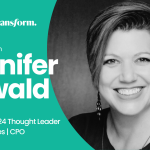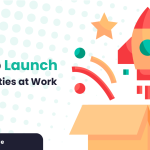
At the forefront of corporate innovation and collaborative learning stands Schneider Electric, a company renowned for its pioneering approach to fostering knowledge exchange and professional growth through its Communities of Practice program. With over 300 thriving communities under its wing, Schneider Electric's Community of Practice program has set a new standard in the realm of collaborative learning and knowledge sharing.
In this exclusive interview, we delve into the insights and expertise of Catherine Thiesse, the Country President Community Program Manager at Schneider Electric. With an illustrious career spanning over 25 years in HR & Procurement functions on both industrial and international scales, Catherine brings a wealth of experience to the table. Her journey includes spearheading the Knowledge Management (KM) and Community of Practice Program at Schneider Electric, as well as serving as the Operational Director of the Knowledge Communities Observatory (KCO) at Kedge Business School.
Join us as Catherine shares her invaluable perspectives on the significance of Communities of Practice, their impact on organizational learning, and the pivotal role they play in Schneider Electric's communication ecosystem.
1) Communities of Practice are a huge part of the company culture at Schneider Electric. Can you talk a little bit about the evolution of the program and the impact you've seen these communities have at Schneider?
12 years ago, we decided to launch several Communities of Practices through a community animation program (Community@Work) sponsored by Strategy, IT, and HR. The primary objective was to facilitate knowledge exchange and communication within the organization. To support the development of these Communities of Practice, it was soon decided to set up a small central team dubbed “Community@Work” hosted in the Knowledge Management team. I was lucky enough to lead this team in 2018/2019.
From three Communities of Practices in 2012, the program developed rapidly. This progress has been accelerated by the dedicated support of the central team, which has provided invaluable start-up guidance and ongoing growth assistance to Community of Practice leaders. Through the provision of essential tools and personalized digital advisory sessions, leaders have been empowered to foster rapid development within their respective Communities of Practices. Support from the central team has been critical to the rapid creation of a community of leaders, streamlining the onboarding process for newcomers.
Today, Schneider counts some 300 Communities of Practice, bringing together more than 35,000 employees. Communities of Practice come in all shapes and sizes: some are specialized and run by experts, others are driven by function, and still others bring together a variety of individuals with a common area of interest. The unique characteristics of communities helps break down Schneider's formal structure, bringing greater plasticity to exchanges that were once bound by communication silos. Without being able to testify to a formal study at this stage, we can say with certainty that Communities of Practice play a major role not only in internal communication, but also in our people’s company commitment. To understand this, it's important to remember that the cornerstone of Communities of Practice is free participation.
2) We're seeing a trend where more and more organizations are launching Community at Work initiatives. Do you have any advice for organizations interested in starting their own Communities of Practice?
You want to facilitate communication in your organization, increase understanding of people and their respective professions, share knowledge and facilitate innovation, develop and attract mature, responsible, motivated employees, and also restore or increase vitality in your organization. Take a positive risk!
3) What were some common objections and roadblocks you encountered when you launched your Community of Practice program?
Establishing a Community of Practice goes beyond casual coffee meetups or online exchanges. It follows distinct stages and requires key personas for its evolution: The Leader, the Sponsor, and the Core Team, each pivotal in its development. I would highly recommend reading the book: “The Practical Guide to Communities” in which you will find all the advice you need to launch and develop a Community of Practice. This book is the fruit of community work carried out with over 40 representatives of companies and organizations and over 35 researchers who are experts on the subject.
4) Determining value and engagement is vital for any workplace initiative. What are some of the KPI's and analytics you are tracking to gauge the benefits of a Community of Practice?
We thought long and hard about this. You can set up metrics for participation rates, number of documents exchanged, number of ideas exchanged, etc. These will reflect the vitality of the community, but not necessarily what makes it last over time. That's why, in addition, we've set up an annual survey which asks each member what the community brings to him or her, to his or her division (or function), and to the organization as a whole.
5) What do you think would make Communities at Work even more successful?
Employees getting more involved and dedicating their time to actively participate in a community. While they often do so in addition to their work, this involvement and the results are often little appreciated. It would be interesting to set up, as Schneider Electric has done, an annual campaign recognizing the most active communities and their contributions to the company's interests.
Few recruitment ads mention the possibility of joining or creating a Community of Practice. Yet I believe this is a real lever of attractiveness and retention for companies.
6) At MixR we believe Communities of Practice are an incredible opportunity to create collective intelligence and develop new capabilities. Is that something you have experienced with your communities at Schneider?
Undoubtedly, my involvement with Communities of Practice has been an enriching experience, fostering personal growth and enhancing proficiency in fostering meaningful exchanges and communication.







